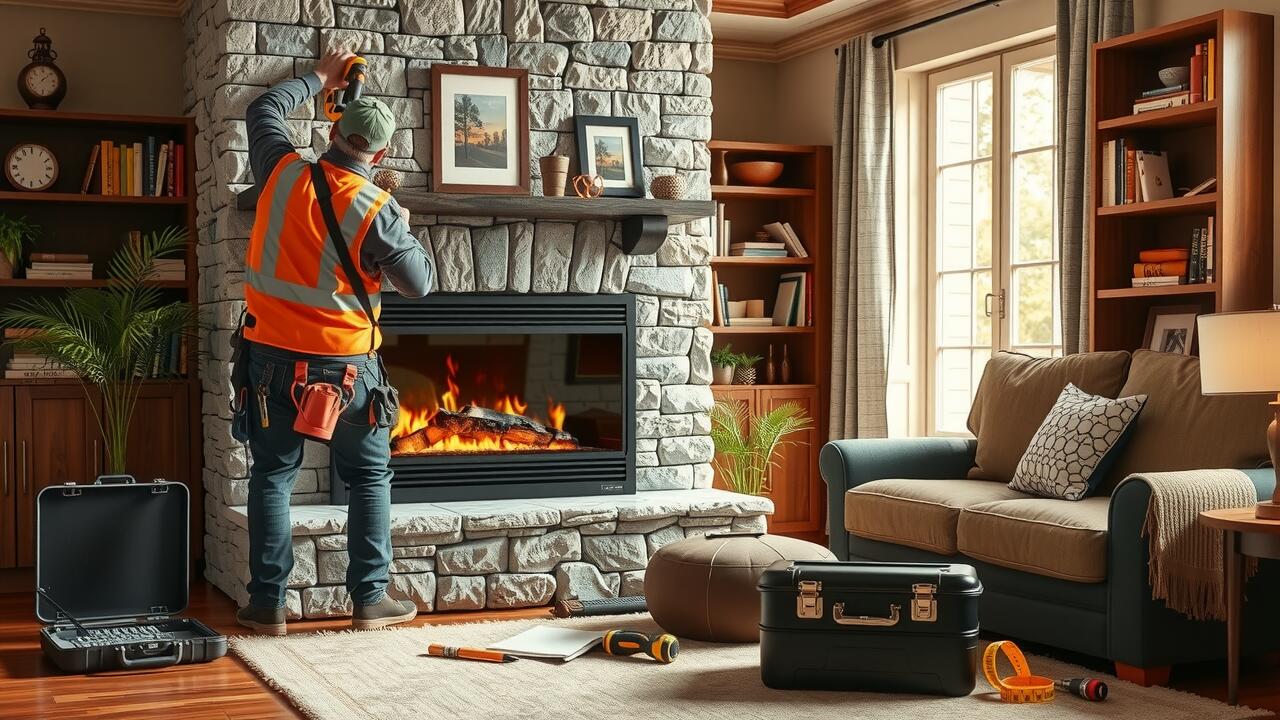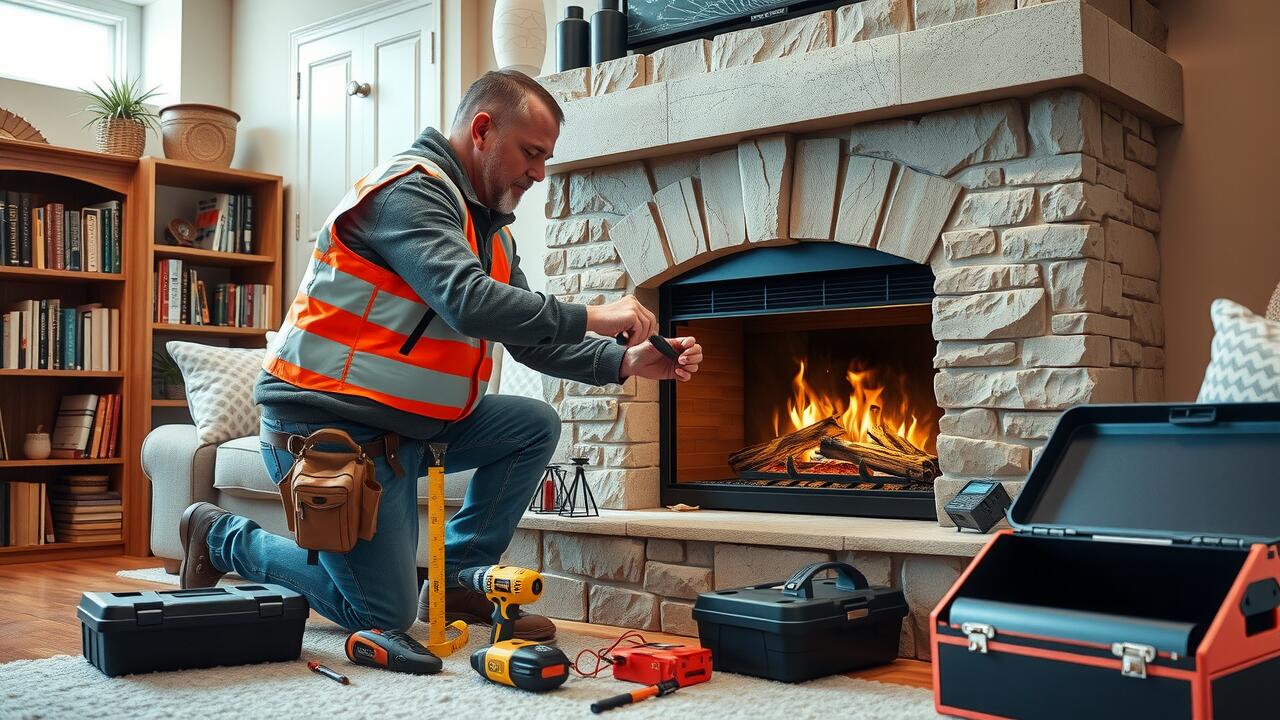Table Of Contents
Common Misconceptions About Electric Fireplaces
Many people believe that electric fireplaces do not provide adequate heat. In reality, modern electric fireplaces are designed to offer efficient heating options for various room sizes. They can generate heat quickly and effectively, often equipped with adjustable settings to cater to individual preferences. This misconception can deter potential buyers from exploring the benefits of electric fireplaces, especially those seeking a convenient and stylish heating solution.
Another common misperception is that Electric Fireplace Installation requires extensive renovations or complicated setups. In truth, most electric fireplaces are designed for simple plug-and-play installation, making them accessible for a broader range of homeowners. No need for gas lines or venting systems simplifies the process even further, allowing for easy integration into various living spaces without major intervention.
Clarifying Installation Myths
Many homeowners believe that electric fireplace installation is as simple as plugging in a device, which can lead to hesitation when considering a purchase. While it’s true that electric fireplaces offer straightforward setup, there are important factors to consider. These units often require proper placement, ensuring sufficient clearance from materials that could catch fire, and adequate access to power sources. Misunderstanding these requirements can result in inefficient operation or safety hazards.
Another common myth is that electric fireplaces don’t require any professional assistance during installation. While many models are designed for easy installation, some may necessitate modifications to your electrical system or wall openings for ventilation. Hiring a qualified electrician can ensure compliance with safety regulations and local codes. This not only enhances the safety and performance of your new electric fireplace but also provides peace of mind regarding its installation process.
Code Compliance and Regulations
Electric fireplace installation must adhere to various code compliance and regulations established by local authorities. These regulations ensure that the installation is safe and meets all necessary standards for wiring and electrical connections. Homeowners should be aware that failure to comply with these codes can lead to potential hazards, such as electrical fires or equipment malfunction. It’s crucial to consult local guidelines before proceeding with the installation, as these rules can vary significantly from one municipality to another.
Different states and localities offer specific regulations that dictate the requirements for electric fireplace installation. These may cover aspects such as the placement of the unit, electrical load capacity, and clearances around combustible materials. Homeowners are encouraged to verify these requirements to avoid issues during the installation process. Engaging a qualified electrician can ensure compliance with all local codes and enhance the safety and efficiency of the installation.
Local Building Codes to Consider
When considering Electric Fireplace Installation, it’s crucial to familiarize yourself with the local building codes in your area. These codes can vary significantly from region to region, reflecting different safety standards and construction practices. They often dictate factors such as the required distance between the unit and combustible materials, as well as specifics regarding venting when applicable. Compliance ensures not only the legality of your installation but also the safety of your home and its occupants.
The process of checking local regulations can often be straightforward, as many municipalities provide access to building codes online. You might also find assistance through local building departments or by consulting with professionals familiar with the legal landscape. Being proactive about these requirements can prevent potential fines and costly adjustments later on. It is always wise to ensure that your Electric Fireplace Installation aligns with the necessary codes before proceeding.
Tools Needed for Installation
When preparing for an electric fireplace installation, having the right tools on hand is crucial for a smooth and efficient process. Basic hand tools such as screwdrivers, pliers, and a level are essential for assembling the unit and ensuring that it is properly aligned. In addition to these standard tools, a measuring tape is important for confirming dimensions and ensuring the fireplace fits within the designated space. Power tools like a drill may also be necessary for securing brackets or mounting the unit if required by the specific design.
Safety equipment should not be overlooked during electric fireplace installation. Safety glasses protect your eyes from debris while working, and gloves can provide a better grip and safeguard your hands. A voltage tester is a critical tool to have, allowing you to verify that the electrical supply is off before beginning any wiring tasks. Having these tools readily available will not only streamline the installation process but also contribute to overall safety as you set up your electric fireplace.
Essential Equipment for a Smooth Process
When embarking on an electric fireplace installation, having the right tools on hand simplifies the process. A power drill, screwdriver set, and measuring tape are essential for securing the unit in place and ensuring accurate installation. Utilizing a level can also help in achieving a straight and balanced setup, avoiding any awkward gaps that may detract from the appearance of the fireplace. A stud finder can be useful for wall-mounted models, ensuring that the installation is anchored securely to the framing within the wall.
In addition to basic tools, consider having a vacuum or dustpan available to keep the work area tidy during installation. Safety gear, such as gloves and protective eyewear, should be used to prevent minor injuries while working with tools. Depending on the specific model, additional equipment like a drywall saw or chisel may be needed for installations that require modifications to existing structures. With the right preparation and equipment, the electric fireplace installation can proceed smoothly and efficiently.
FAQS
Do I need an electrician to install an electric fireplace?
While many electric fireplaces are designed for easy installation and can often be set up by homeowners, it’s advisable to consult an electrician, especially if electrical work or modifications are required.
What are the common misconceptions about electric fireplace installation?
One common misconception is that electric fireplaces require extensive electrical work, which is often not true. Most models simply need to be plugged into a standard outlet, but it’s important to ensure the outlet meets safety standards.
Are there specific building codes I need to follow when installing an electric fireplace?
Yes, local building codes may have specific regulations regarding the installation of electric fireplaces, so it’s essential to check with your local authorities to ensure compliance.
What tools will I need to install an electric fireplace?
Basic tools typically needed include a screwdriver, level, measuring tape, and possibly a stud finder. The exact tools required may depend on the specific model you are installing.
Can I install an electric fireplace by myself if I have basic DIY skills?
Yes, if you have basic DIY skills and the installation instructions are clear, you can likely install an electric fireplace yourself. However, it’s still a good idea to consult with an electrician if you have any doubts or face electrical complications.



